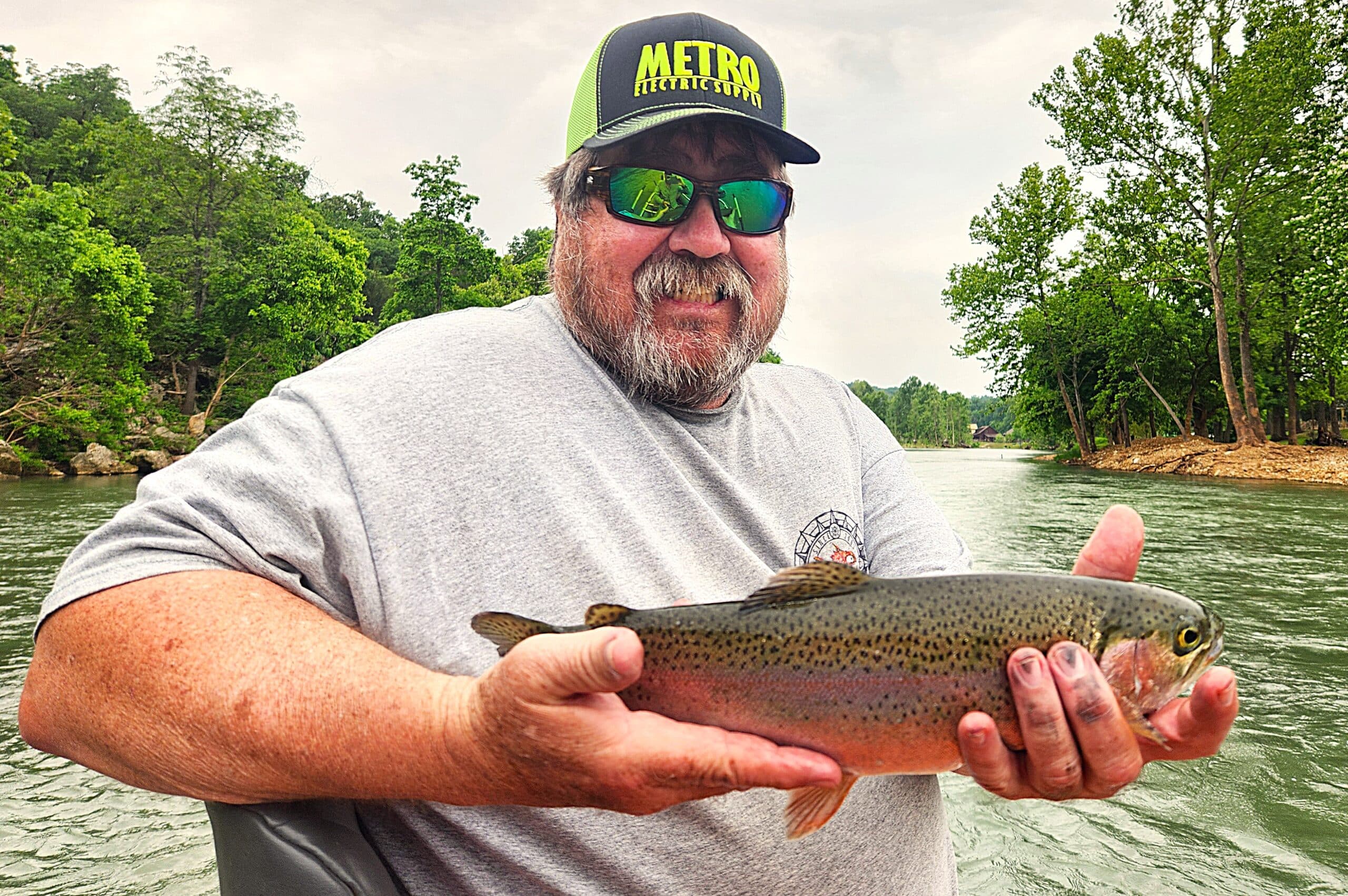AGFC lowers booms on giant salvinia spread at Lake Columbia and beyond
BY Jim Harris
ON 09-29-2021
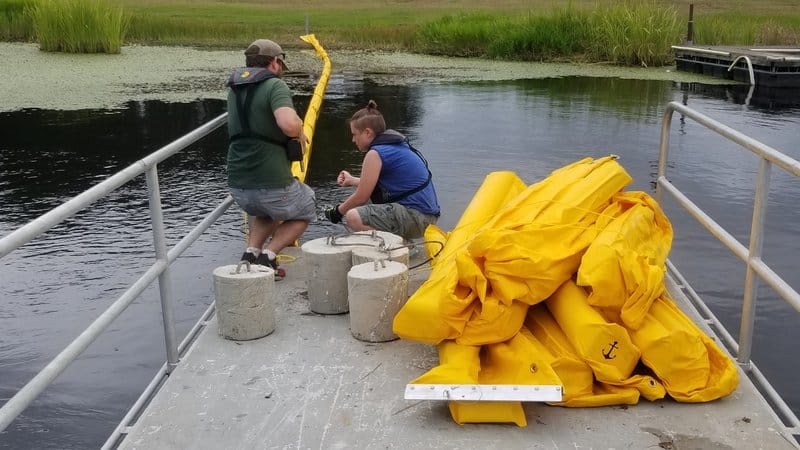
Sept. 29, 2021
Jim Harris
Managing Editor Arkansas Wildlife Magazine
MAGNOLIA – Giant salvinia, a highly invasive aquatic plant that was first detected in Lake Columbia in December 2019, has the full attention of Arkansas Game and Fish Commission’s Fisheries Division. AGFC biologists have partnered with multiple agencies in attempts to slow its potential spread not only in this lake, but in other nearby waterways.
AGFC biologists out of its Camden office have deployed containment booms at all boat ramps, with the exception of the Beech Creek Boat Ramp, at Lake Columbia. Giant salvinia can spread rapidly throughout a water body – under ideal conditions, the aquatic fern has the capability to double in number and size in less than a week. Biologists hope that these new containment booms, in concert with herbicide application work being done by Columbia County Rural Development Authority, can lessen the impact of the invasive plants.
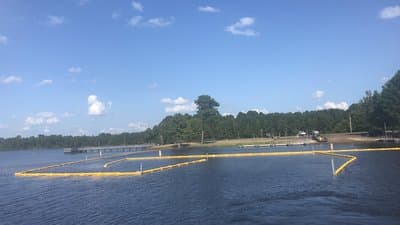
Containment booms first were placed at the western boat ramp at South Shore Landing on Lake Columbia in August. The AGFC quickly followed that up in September with containment booms being placed at the eastern boat ramp on South Shore Landing, as well as at the boat access at North Shore Landing. Containment booms will not be placed at the Beech Creek Access due to the shallow water around the boat ramp.
“The structures are designed to exclude giant salvinia from boat launch areas while allowing boats to enter and exit, which will limit the potential for it to spread to additional lakes via boat trailers exiting the lake,” Andy Yung, the district fisheries supervisor in Camden. “Louisiana has used these floating booms in their lakes. These are the first booms that we’ve put out in Arkansas to prevent the spread of giant salvinia.”
The booms are held up by steel posts and braces, with heavy, large concrete anchors in between on each anchor point, Yung said. A solid curtain hangs down with a length of chain run through the bottom for weight. There are anchor points every 25 feet, and almost every one was anchored “so they are pretty solid.” When remnants of a hurricane pushed through the area several weeks ago, the booms stayed in place in heavy wind.
The lake is owned by the Columbia County Rural Development Authority, while the AGFC manages the fishery. The county RDA began periodic herbicide applications in early April 2020. Earlier this week, the RDA found a salvinia hot spot and sprayed 500 gallons of a herbicide mix, Yung said.
Yung reminds anglers and boaters, as well as waterfowlers during the hunting season, to remember to “always clean, drain, and dry your boat and trailer to help do your part in preventing the spread of aquatic invaders like giant salvinia.”
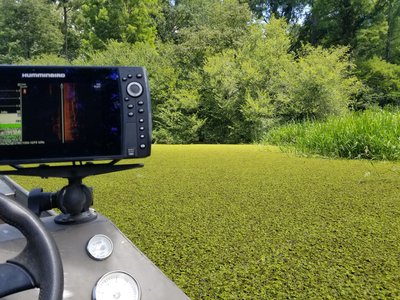
Giant salvinia appeared on Lake Erling, which is about 16 miles southwest of Lake Columbia, in late 2018. Erling, which is owned by American Gamebird Research Education and Development Foundation and has a cooperative management plan with the AGFC, has been drawn down 8 feet to help in curtailing the salvinia along the shoreline.
“You can take a small portion of giant salvinia and it reproduces very quickly,” Yung said. “If you have, say, 1 acre of it, and it doubles every week, it can just take over an area. I call it the kudzu of the water. Some days, you feel like you can literally watch it growing in the water.”
Giant salvinia’s speed at which it can grow is what separates it from other aquatic nuisance species such as alligatorweed, which has become another notorious invader of Arkansas lakes in recent years. Alligatorweed tends to be more anchored, Yung said, and grows slower. In barely any time, the cabbage-head-like giant salvinia will have covered a cove of a lake, leaving no open water for boating and creating dead water for fish and other aquatic life by blocking out the sunlight.
Until recently the problems with giant salvinia seemed relegated to Texas and Louisiana lakes. There appeared to be a “demarcation line,” between Interstate 20 and the Arkansas-Louisiana state line, where giant salvinia spread seemed to stop. But milder winter weather in the area of late seems to have changed that, and salvinia has marched further north. Interestingly, though, the heavy freeze, ice and snow of this past February seemed to have helped eliminate larger areas of salvinia in Lake Columbia.
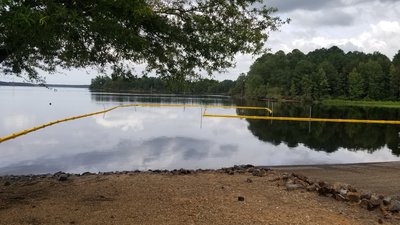
Yung notes that significant dollars are being spent in Louisiana and Texas fighting giant salvinia. “The difference here to there is, Louisiana is trying to control it; we would like to eliminate it. The cold snap we had in February knocked it back and gave us a chance to fight hard this year and run it out of town.”
The containment booms serve two purposes, he said: One, to keep salvinia from spreading any further than it has, and two, as an awareness beacon of sorts for boaters and anglers to help them understand how important it is to stop its spread. “When you pull up to the ramp, you definitely notice those booms,” Yung said.
Recent News
Subscribe to Our Weekly Newsletter E-mails
Don’t miss another issue. Sign up now to receive the AGFC Wildlife Weekly Newsletter in your mailbox every Wednesday afternoon (Waterfowl Reports are published weekly during waterfowl season and periodically outside the season). Fishing Reports arrive on Thursdays. Fill in the following fields and hit submit. Thanks, and welcome!


